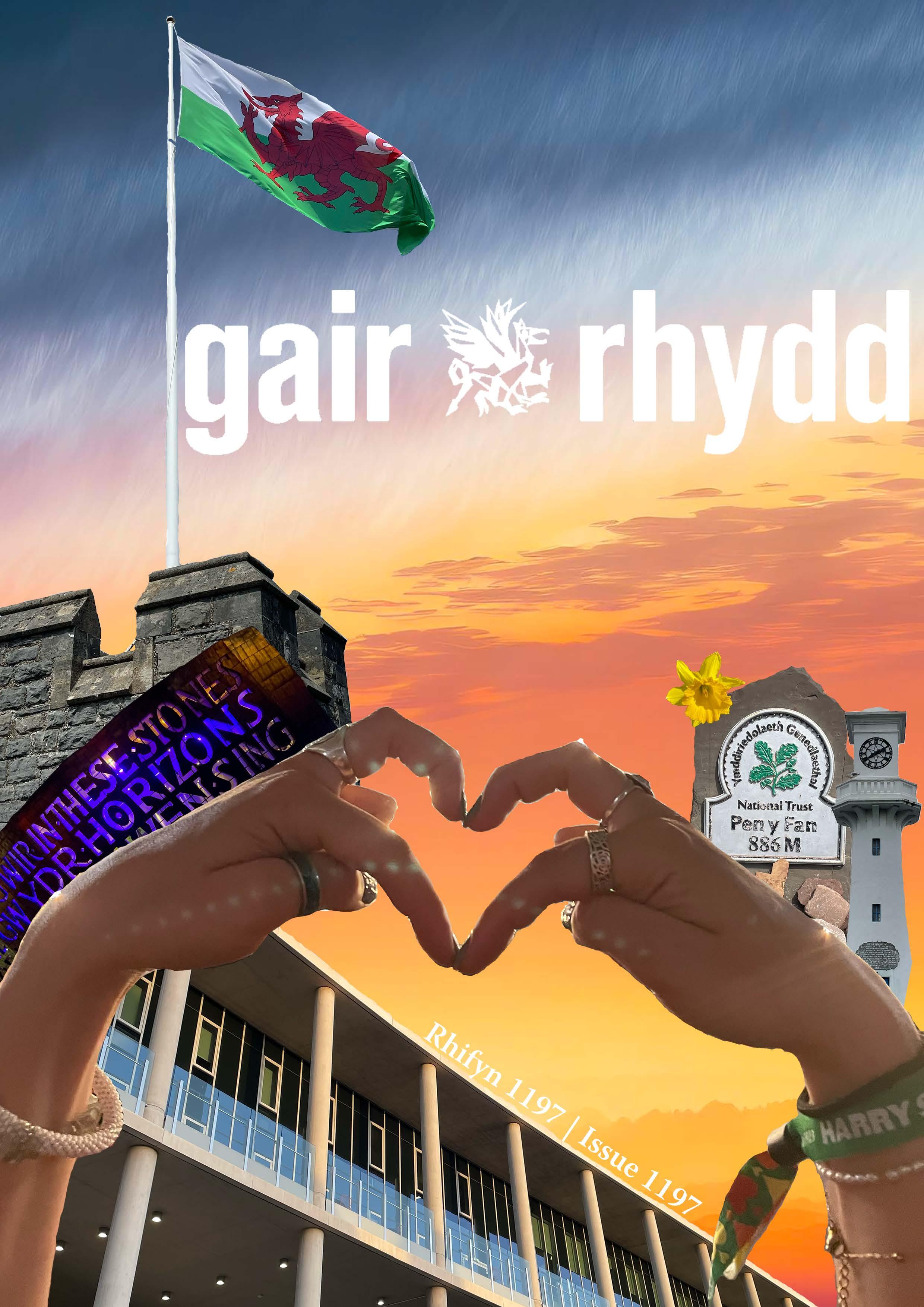

Dydd Gŵyl Dewi Hapus | Happy St David’s Day
Edward Sutton – Prif Olygydd | Editor in Chief
Gyda hi'n laf o Fawrth unwaith eto, mae'n gyfe gwych i ddathlu pob agwedd o ddiwylliant Cymru. Rwyf wedi ceisio gwneud clawr ar gyfer y rhifyn hwn gyda'r holl bethau sy'n fy ngwneud yn falch o fyw yng Nghymru. Y wawr ym Mhenarth, dringo Pen y Fan, yr haul ar y CSL yn yr hâf yn dim ond thai o'r eiliadau bach rhyfedd hynny sydd wedi aros gyda mi. Efallai fy mod yn Saesneg, ond mae byw yng Nghaerdydd am y tair blynedd diwethaf, wedi creu gofod siâp cennin pedr yn fy nghalon. Cymru yw'r lle cyntaf rwyf wedi byw ar fy mhen fy hun, ble ddoes i i'r brifysgol a ble'r wyf wedi cyfarfod rhai o fy ffrindiau gorauprofad tebyg lawn i lawer chonoch dwi'n siwr. Rwy'n gwybod fel myfyrwyr, nid oes angen lawer o anogaeth arnom i fynd allan i ddathlu y penwythnos yma and beth am roi spin Cymraeg ar beth bynnag yr ydych yn ei wneud. Yn y rhifyn hwn, mae gennym ni erthyglau anhygoel, gan gynnwys cyfweliad gyda'r Prif Weinidog, Mark Drakeford, a newyddiaduraeth Cymraeg gwych gan ein tîm Taf-Od. Rwy'n gobeithie y dydd Gwener hwn y byddwch yn cymryd eiliad i werthfawrogi lle yr ydym yn byw, gweithie ac astudio ynghyd â'r hanes a'r diwylliant eyfoethog sy'n syd-fynd ag ef.
Dydd Gŵyl Dewi hapus i chi gyd!
1st of March rolls around and with it the premier opportunity to celebrate all aspects of Welsh culture. I’ve tried to make a cover for this edition of all the little things that make me proud to live in Wales. Sunrises at Penarth, climbing Pen y Fan, the sun on the CSL in summer are just some of those little odd moments that have stayed with me. I may be English but living in Cardiff for the last three years has created a daffodil shaped space in my heart. Wales is the frst place I’ve lived on my own, where I came to university and where I’ve met some of my closest friends – a similar experience to many of you, I’m sure. I know as students we don’t need much encouragement to go out and celebrate but this weekend why not put a Welsh spin on whatever you’re doing. In this edition, we’ve got some incredible pieces including an interview with the First Minster Mark Drakeford and some fantastic Welsh journalism from our Taf-Od team. I hope this Friday you take a moment to appreciate the place where we live, work and study along with the rich history and culture that accompanies it.
Dydd Gŵyl Dewi Hapus to you all!
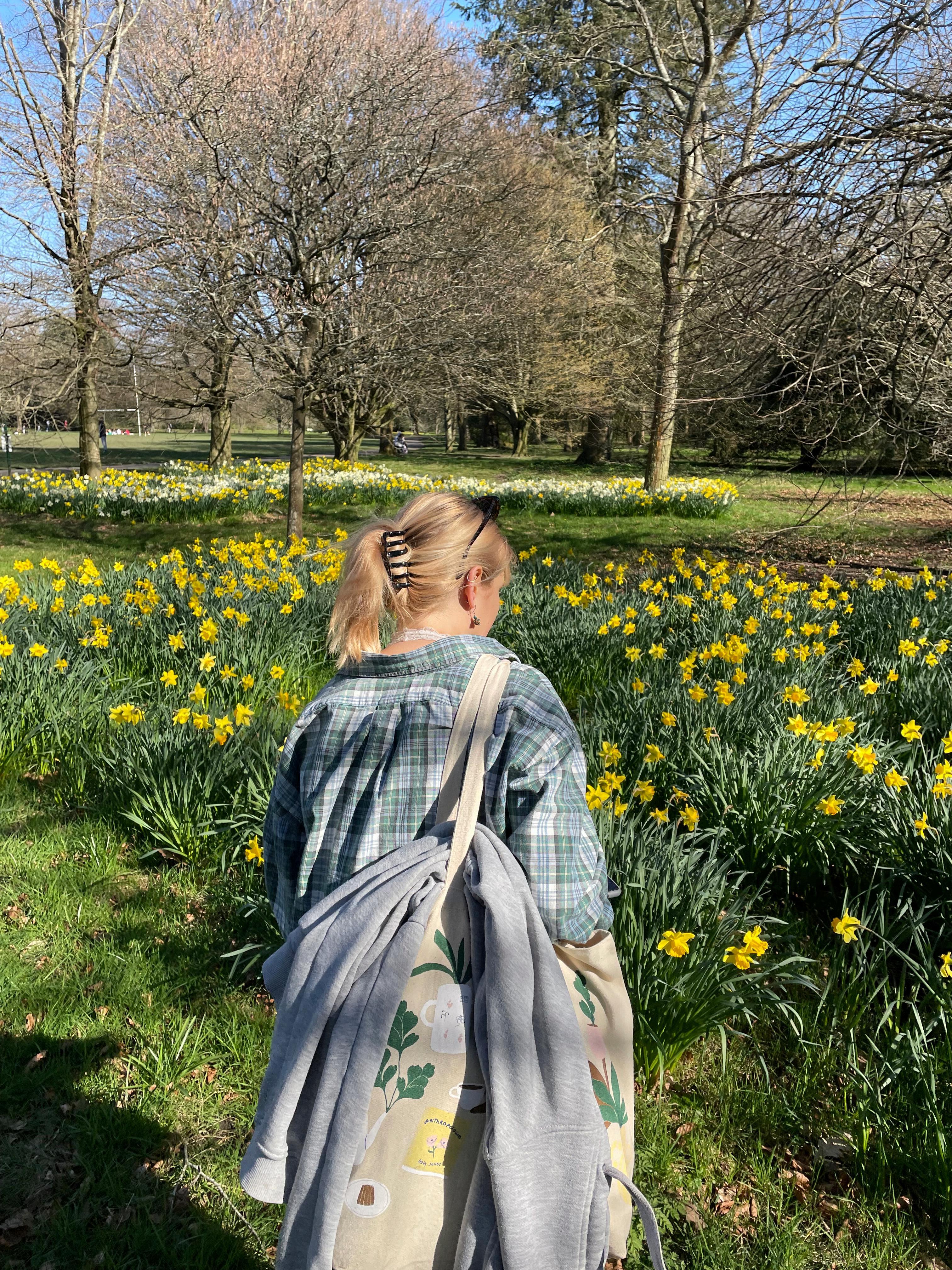
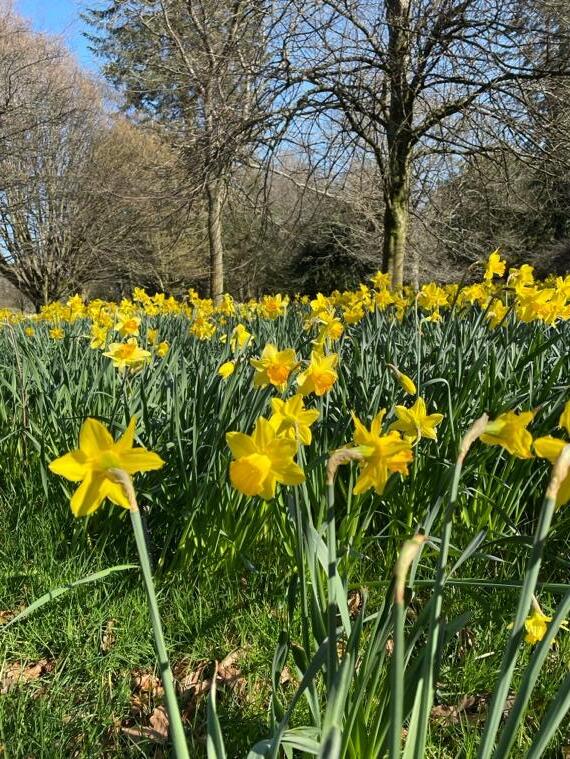

Dygymod gyda’r misoedd olaf y flwyddyn olaf fel myfyrwyr
Prifysgol Caerdydd
Efa Ceiri – Pennaeth Taf-Od
Ar drothwy’r cyfnod olaf fel myfyrwyr prifysgol Caerdydd, mae’r mwyafrif ohonom sydd yn y drydedd flwyddyn yn siwr o deimlo’r baich o bryd i’w gilydd. Gyda gofynion arholiadau, gwaith cwrs neu thraethawd hir, mae’r daith tuag ar raddio ar adegau yn gallu teimlo’n llethol iawn. Credaf ei bod yn deg dweud bod llawer ohonom wedi laru trafod beth sydd ar y gweill y flwyddyn nesaf – yn enwedig os nad oes gennych chi ateb i’r cwestiwn hwnnw.
Gall cydbwyso gwaith academaidd a gweithgareddau bywyd cymdeithasol fod yn her i rai, ond mae’n bwysig ein bod ni’n ceisio meistroli’r sgiliau rheoli amser hyn oherwydd i’r rhan fwyaf ohonom, dyma’r ychydig fisoedd sydd gennym ni fel myfyrwyr.
Mae’n bwysig ein bod yn aros yn drefnus gan ddefnyddio cynllunwyr, calendrau neu ddyddiaduron i reoli tasgau i ac i gadw golwg ar derfynau amser, aseiniadau ac arholiadau. Mae rheoli amser yn sgil hanfodol yn eich trydedd flwyddyn – gwnewch yn siwr fod gennych chi slotiau penodol ar gyfer astudio, mynychu darlithoedd / seminarau a gweithio ar aseiniadau. Wrth reoli’ch amser yn ddoeth, cewch chi ddigon o gyfle i fynychu’r Undeb Myfyrwyr ar nôs fercher cyn i ofynion bywyd ôl- raddedig ddod i’ch cwrdd.
Mae lles unigolion yn hollbwysig yn enwedig yng nghanol straen diderfyn astudiaethau y drydedd flwyddyn. Blaenoriaethwch eich hunain yn y cyfnod hwn gan edrych allan am unigolion eraill. Yng nghanol prysurdeb a gofynion y flwyddyn olaf, gwnewch y mwyaf o’r cyfnod hwn sydd gennych chi fel myfyrwyr prifysgol. Sicrhewch fod gennych chi atgofion tragywyddol o’ch cyfnod yma yng Nghaerdydd – boed hynny’r oriau a dalodd ar ei ganfed yn y llyfrgell, neu’r oriau a dreuliasoch ym mar Clwb Ifor Bach.
(Tarddiad:Flickr)

Protesiadau Amaethyddyddol Cymru o ganlyniad i Brexit
Ffion Wyn Jones - Golygydd Tafod
Gwelwyd gwrthdaro ffyrnig ar draws Gymru trwy brotestio a chynadleddau ar ôl cyhoeddiad cynlluniau dyfodol amaethyddiaeth yng Nghymru. Mae’r gwrthdaro wedi sbarduno ar draws Gymru drwy ‘streicio araf’ a phrotestio gan rwystro traffig mewn nifer oardaloedd fel Y Drenewydd (Canolbarth) a Chaerfyrddin (De Orllewin).
Gwnaeth cynhadledd yng Nghaerfyrddin ar yr 8fed o Chwefror denu 3,000 o ffermwyr lleol roedd yn gwrthwynebu'r polisi newydd. Mi ddaeth wynebau cyfarwydd ymlaen i gefnogi’r gynhadledd gwnaeth ddenu sylw’r cyfryngau megis Nigel Owens. O’r fan yma, trefnwyd ‘protest araf’ fel arwydd o anfodlonrwydd y cymunedau lleol ar yr A48 rhwng Pensarn a Cross Hands, dydd Gwener yr 16eg o Chwefror.
Bu’r protestiadau diweddar ledled Cymru o ganlyniad i Gynllun Ffermio Cynaliadwy a gyhoeddwyd gan Lywodraeth Cymru ar y 14eg o Ragfyr, 2023. Cyhoeddwyd y polisi newydd yma yng Nghymru fel ffordd o “paratoi at y dyfodol trwy dargedu costau uwch a’r argyfwng hinsawdd.” – Llywodraeth Cymru. Bu’r newidiadau yn cychwyn mor gynnar ag 2025, a ddylai fod wedi cwblhau erbyn 2029 sef y ‘cyfnod pontio’.
Gofynnai’r polisi i ffermwyr blannu coed ar 10% o’u tir a chadw 10% o’u tir a’i thrin fel cynefin bywyd gwyllt fel y prif ofynion. Mae ffermwyr yn gwrthdaro yn erbyn hyn oherwydd y ‘diffyg mewnwelediad o safbwynt y ffermwyr’ gan y cyhoedd. Yn ogystal â sefyllfa bresennol y diciâu yng Nghymru a’r ymdriniaeth gan y Llywodraeth tuag at y pwnc llosg.
Fel y dywed Lesley Griffiths (Gweinidog Materion Gwledig) o fewn y cynllun ei fod yn; “gynaliadwy fel dechrau rhaglen hir dymor i gefnogi’r diwydiant amaethyddol.” Rhad i holl ffermwyr cydymffurfio a’r gofynion er mwyn derbyn y taliadau sylfaenol cyffredinol.
Datganai Drakeford mewn cynhadledd i’r Wasg am y pwnc fod “newid yn anochel.”
Dadleua Drakeford yn ystod y gynhadledd hefyd, “ni all arian cyhoeddus fod yn fewnbwn i amaeth yng Nghymru heb farn y cyhoedd yn rhan o’r cynlluniau, ac ni gall y ffermwyr gwneud beth bynnag a hoffent gyda’r arian.”
Ymatebai Llywydd Undeb Cenedlaethol Amaethwyr Cymru (NFU) Aled Rees i’r hyn roedd gan Drakeford i ddweud am y mater; “Mae yna ddiffyg cydnabyddiaeth am yr hyn mae amaethyddiaeth yn cyfrannu i’r gymdeithas yn bresennol.” Datganai aelodau o’r Senedd o bleidiau Ceidwadol a Phlaid Cymru fod y datganiadau gan Drakeford yn “diffyg dirmyg tuag at ffermwyr” – Andrew RT Davies, a bod y sylwadau yn uwcholeuo “diffyg cysylltiad” rhwng cymunedau trefol a chefn gwlad Cymru – Llŷr Gruffydd (Siaradwr Cyhoeddus materion gwledig Plaid Cymru).
Arafu Ffasiwn Brys
Beca Dalis - Golygydd Taf-Od
Yn ôl ymchwil gan Greenpeace, tybir y bydd y diwydiant ffasiwn yn gyfrifol am gwarter carbon y blaned erbyn 2050.
Y grŵp oedran ‘Gen Z’ sef pobl 18-25 oed sy’n siopa'r fwyaf anghynaladwy, wrth iddyn nhw siopa fwy nag unwaith yr wythnos.
Yn ôl Greenpeace cafodd Covid-19 effaith ar batrymau siopa pobl wrth i bobl sylwi fod siopa ar-lein yn hawdd ac yn hygyrch iawn.
Mae Mudiad Ffasiwn Araf yn fudiad sy’n annog pobl i siopa yn gynaliadwy ac i arafu eu patrymau siopa.
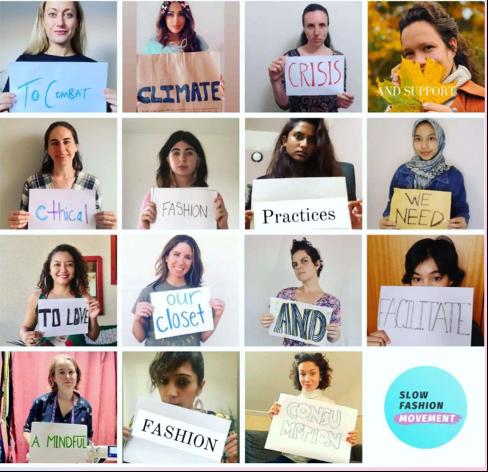
Pobl yn rhan o ymgyrch Mudiad Ffasiwn Araf
https://slowfashion.global
Yn rhan o’r mudiad maent yn creu blogiau, digwyddiadau ac ymgyrchoedd i geisio cael pobl i ddeall effaith y diwydiant ffasiwn ar y blaned.
Mae dros 8 miliwn o Brydeinwyr yn cael gwared â dillad yn hytrach nac atgyweirio, sy’n arwain at 300,000 tunelli o garbon yn cael eu llosgi yn flynyddol.
Dywedodd mudiad WRAP fod prynu un crys-t gwyn cotwm yn cynhychu allyriannau sy’n gyfatebol i yrru 35 milltir mewn car.
Trwy gadw ac ail-wisgo dillad am 9 mis ychwanegol bydd ôl-troed carbon unigolyn yn lleihau 20-30%.
Honnodd Shania Cooper, newyddiaduwyr marchnata, fod y cyfryngau cymdeithasol yn cael effaith ar batrymau siopa Gen Z.
Dywedodd fod dylanwadwyr a haulsyn dylanwadu’r gynulledifa.
Nododd hefyd fod amrywiaeth ar-lein yn gallu cysylltu pobl a chreu cymunedau ac felly mae pobl yn prynu dillad i deimlo’n rhan o rhywbeth.
Dengys ymchwil fod Gen Z yn gwario fwy ar ddillad sy’n trendio o’i gymharu gyda’r Prydeinwr Cyffredin.
Mae Eto Eto yn frand sy’n creu bagiau o diwbiau beic wedi’i defnyddio ac yna ar y tu mewn mae deunyddiau ymbarelau a phebyll sydd wedi torri.
Yn ogystal, mae’r deunyddiau yn amrywio o bwll padlo, matras gwersylla a gweddillion ffatrïoedd, jîns denim.
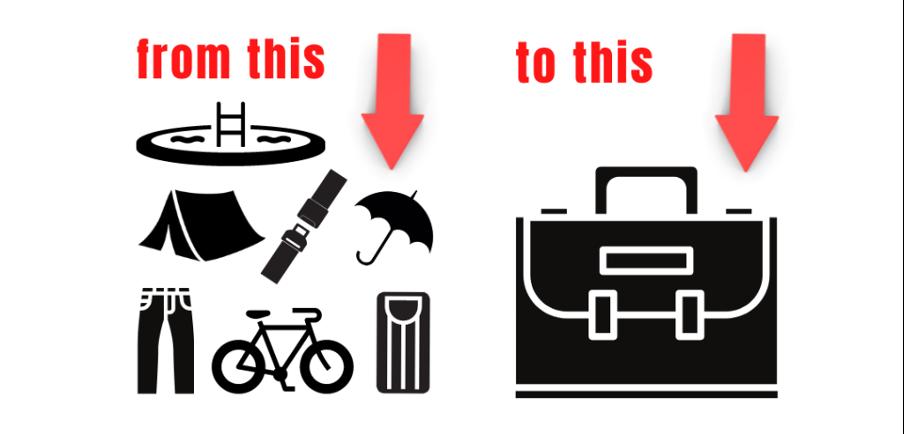
Delwedd Eto Eto sy’n dangos taith bywyd y nwyddau caiff eu hail-gylchu. https://etoeto.uk/about-etoeto/
Dywedodd y sylfaenydd, Sylvia Davies, ‘dwi’n casau y syniad o wastraff’.
Nododd hefyd fod dim modd cael gwared â’n gwastraff am byth, oherwydd mae’n dal i fod ar y blaned yn rhywle.
Mae Dillad a Thecstilau Cynaliadwy (SCTC) yn cynnwys elusennau, busnesau lleol, addysgwyr ac unigolion.
Maent yn cynnig ffyrdd i bobl Cymru ar sut i fod yn fwy cynaliadwy.
Mae deunydd ar hwb Llywodraeth Cymru a Gwefan SustFashWales yn cynnig camau gwyrdd i bobl.
Clybiau nos yn ‘annog’ pobl ifanc i fepio.
Llŷr Eirug - Golygydd Taf-Od
Mae pobl ifanc yn teimlo fod gwerthiant fêps untro mewn clybiau nos yn eu ‘hannog’ i ddechrau fepio.
Yn ôl yr elusen Ash ‘gwelwyd cynnydd o 50% yn nifer y bobl ifanc a phlant sy’n arbrofi gyda fêps ers 2023’. Gyda chlybiau nos yn gwerthu fêps untro, a yw hyn yn ffactor sy’n gyfrifol am y cynnydd hwn o ddefnyddwyr fêps untro?
Yn wahanol i ysmygu sigaréts arferol nid yw ysmygu fêps y tu mewn i fannu cyhoeddus, difwg yn torri unrhyw drosedd. Noda deddfwriaeth Ddi-fwg Llywodraeth Cymru ‘os bydd unigolyn yn defnyddio e-sigarét/fêp mewn lleoliad y mae’n ofynnol iddo fod yn lleoliad difwg, ni fydd yr unigolyn hwnnw’n cyflawni trosedd’.
‘Annheg iawn ar y rhai sydd yn dewis peidio’
Yn ôl Llywodraeth Cymru, cafodd Rheoliadau ‘Di-fwg’ (2007) eu cyflwyno i amddiffyn gweithwyr a’r cyhoedd rhag effeithiau niweidiol mwg ail law. Er hyn, teimla Heledd Prys, Myfyrwraig o Brifysgol Caerdydd, y dylai Llywodraeth Cymru gyflwyno deddfwriaeth i wahardd y defnydd a gwerthiant o fêps untro mewn clybiau nos.
“Mae’n annheg iawn ar y rhai sydd yn dewis peidio â ‘feipio’ gan fod y mw gyn treiddio trwy’r clwb ac felly’n ein gwneud yn ysmygwyr goddefol. I fod yn onest, rwy’n eithaf amheus ohonynt gan eu bod yn sylweddau gweddol newydd, sy’n golygu nad oes llawer o waith ymchwil wedi’i wneud iddyn nhw ar hyn o bryd” meddai.
“Mae’n anghyfrifol iawn i glybiau nos fod y neu gwerthu gan fod mwy o debygrwydd i bobl gael eu darbwyllo i brynu ‘fêp’ o dan ddylanwad alcohol, a eu bod o fewn eu cyrraedd. Yn bendant, dylid cyflwyno deddfwriaeth i wahardd ‘fepio’ tu mewn i glybiau nos. Ni ddylai clybiau nos fod yn annog hyn, gan eu bod yn targedu poblogaeth ifanc, sy’n cael eu dylanwadu’n hawdd”
‘Datblygu ymddygiadau caethiwus’
Mae Dr. Amira Guirguis, Ysgol Feddygaeth Prifysgol Abertawe, yn arbenigwr ym maes Camddefnyddio Sylweddau’ ac yn lleisio’i phryderon dros fepio ymhlith pobl ifanc:
“Gall fêps arwain at ddatblygu ymddygiadau caethiwus ac arbrofi gyda sylweddau sydd yn hawdd mynd yn gawth iddynt, fel nicotîn, yn ogystal â chael eu hamlygu i sylweddau niweidiol – rhai ohonynt efallai sydd ddim erioed wedi cael eu profi trwy lwybr anadliad.”
“Mae’r arfer o werthu fêps mewn clybiau nos yn ei gwenud yn haws cael gafael ar ddyfeisiau a allai fod yn niweidiol, heb ddigon o fonitro i gyflwyno cyfyngiadau er enghraifft, i’r rhai dan 18 oed” meddai.
Gofynnwyd i glwb nos, sy’n gwerthu fêps untro, am y rheswm dros eu penderfyniad i’w gwerthu. Yn ôl y clwb nos:
“Daeth cwmni o’r enw VapesApesatom yn cynnig i osod peiriant gwerthu fêps yn ein clwb nos. Yn gyson, roedd pobl yn holi ble roedd y siop agosaf i brynu fêp neu sigaréts. Oherwydd hyn, penderfynon ni dderbyn cynnig VapesApes . Er bod peiriannau gwerthu fêps y clwb nos wedi’i leoli yn nghefn y clwb ac ddim yn wynebau y cwsmeriaid mae gwerthiant y fêps wedi bod yn llwyddiannus ac yn boblogaidd.”
(Tarddiad:Flickr)


An Interview with Mark Drakeford - First Minister of Wales
Thomas Wilson – Politics Editor
HowdoyoufeelyourtimestudyingLatinatKentinfluencedyourpolitics?
Kent in those days was at the tail end of the 60s student militancy; much of my first year was spent with people sitting in and that sort of thing. Debates in the student union were between the broad left, which certainly didn’t include the labour party, and the International Marxist Group as to whether the working classes of Canterbury were about to rise. I used to sit there suggest we ought to go out and ask all five of them! Student politics didn’t interest me at all given its remoteness and the reality of what was happening in the world.
WhatdoyouthinkthelinkbetweenClassicsandpolitics?
In classical education you are studying rhetoric from 2000 years ago and when you are reading Latin authors you are aware of the way they construct sentences and use language. Politicians ply their trade through words and Latin does give you insight into the way language can be used for persuasive purposes. I must say Latin has not been of a daily advantage to me.
HowhasCardiffchangedsince1979?
The city was in a way still in recovery from the post war austerity and I think it has changed in so many ways. When I worked in Ely in 1979, it was very multicultural and had the largest council estate in Europe at the time. Men worked in the paper mill and women worked in the hospital. Those two employers dominated the working experience for people. People left school at 15, with schools having very little ambition, with the expectation being that these people would work in the same occupation as their parents. The city is more buyout and multicultural and attractive city. For the size of it, it has a thriving cultural, arts and sports. All the things’ people enjoy out of work are available in Cardiff which is quite the contrast from 1979.
Areyouconcernedabouttheclampdownsonuniversityfreedoms?
It is an ambiguously politically driven set of arrangements by a conservative government appealing to people on its own right wing. They are keen on freedom of speech so long as it’s the freedom to express the things they believe in. These are people who want to control what you read, control what you see, control what you get up to in your bedroom think de-platforming people is something you should do in very rare circumstances. I can vividly remember going to hear Mary Whitehouse speak at Kent and she was howled
down and unable to speak. All this resulted in was an enormous public relations triumph for her with all the coverage not focusing on critiques but the idea of her being victim to an unruly mob.
WhatdoyoufeelthekeyissuesarewiththeNHS?
My view is that its money. Up until 2010 we spent the same proportion of national income as say Germany and France which saw unprecedented public satisfaction. Ever since then, the gap between what we spend domestically compared to nations abroad has widened and is wider than it has been in this whole century. The NHS has been running on empty because the government will not invest in it and that lack of investment means we have exhausted staff who are being asked to double their efforts to deal with the backlog from the pandemic. The number of the people on the waiting list fell last month and the total number of people on the waiting list had risen by 0.4% last year compared to 5.9% in England. We need capital investment in order to offer people the service they need, modern buildings and modern equipment.
HowwouldyousaycooperationwasbetweenNumber10andthedevolved governments?
I would describe it as frustratingly variable. There were points when cooperation was good such as when COBRA meetings were regularly held but then there would be acres of time with no contact at all. Why the UK government was never prepared to institutionalise a bedrock of regular contact is very hard to understand, although in the inquiry we are starting to see some clues. I wrote to the PM early on that there ought to be regular meetings once a month where we would share information and I never had a reply. I initially felt it was due to the chaotic nature that came as a result of people working flat out and that the letter was buried under a pile of horse and hound magazines or whatever they were reading at Number Ten. It turned out there was a whole meeting about this letter in which they positively decided not to agree as that would have given the impression the PM was on a par with other leaders of Britain. For status driven reasons that was unfathomable to me, they decided not to have a pattern of engagement that would have helped us all.
Whatwerethekeyfactorsfordevolutionin1997?
One of my predecessors Rhodri Morgan said many times in this office that Mrs Thatcher was the greatest recruiting sergeant of devolution. During debates on devolution, if you said at the end, you’ll never see Mrs Thatcher back ruling Wales they were all for it. In some ways it is a remarkable turnaround. It is the experience of all those years of Conservative rule despite Wales never giving them a mandate, yet the nation receives the full unmitigated impact of policy which have not been endorsed by people in Wales. The
first priority of a Labour government ought to be to entrench the devolution settlement in a way that makes it less vulnerable than it has been shown to be over the past five years where we have seen money and power taken away from Wales. I’m in favour of devolution of criminal justice to Wales which I understand is a long-term process and cannot happen overnight. I’m very keen we embark on that journey. The Gordon Brown report recommends job centres should be run by the Welsh government. We would run job centres very differently – we would have them be places where people felt they were supported, helped, and invested in if they need training.
Whatalternativeswouldyouliketohaveseentoausterityimplementedin2010?
The alternatives were plain to see – if you look at the way the American economy was steered after 2008 was completely different. They used Keynesian approaches and did the simple thing of government spending money during economic contractions. We had an economic crisis on the one hand and a government who imposed austerity on top of it –which was effectively having one problem and making it worse. This was the equivalent of medieval medicine where they would bleed patients. Our current discontents are very much linked to Osbourne’s time as chancellor who I feel gets off very lightly in the public prints. We would have been far better off with a straightforward Keynesian approach in which government invested money in soaking up the economic slack with infrastructure projects and finding jobs for people which would have stimulated economic recovery.
Doyouhaveanymorefaithinoureconomicsystemstowithstandrepeatsof2008?
I’m a socialist and have been throughout my political life. If you’re a socialist, you believe that markets are good servants but bad masters and what we have allowed is markets to become the master. I don’t believe that, and I think there is a large space for markets to work but they have to be regulated in the public interest because they don’t naturally work in the public interest, do they? Their natural tendency is to monopoly and to be a conspiracy against the public. That’s why the job of government is to regulate markets in a way that makes the public interest a powerful player in the way that markets operate which we have stood back form ever since Mrs Thatcher. Look at the scandal of water in England and the private companies monopolising something people cannot live without into a debt-ridden brink of crisis service where all the money is ciphered off to the continental governments. When you allow markets to be in charge, you get outcomes that are not in the public interest. With government regulation, markets will do their job and deliver some beneficial outcomes.
A Night at the BAFTAs
Dilichi Dieobi – Head of News
Last Sunday (the 18th of February), London’s Southbank Centre hosted the annual British Academy Film Arts Awards – more commonly known as the BAFTAs. is year the awards were a jumbled combination of tears, a dog, and Sophie Ellis Bextor’s infamous song Murder on the Dancefoor. David Tennant brought a dog, Saltburn star Barry Keoghan thoroughly enjoyed Bextor ’s performance of Murder on the Dancefoor, and Da’Vine Joy brought journalists to tears when asked about the strange choice to release e Holdovers in January in the UK , despite it being set in Christmas.
Christopher Nolan’s 2023 flm Oppenheimer took home multiple awards, including best picture, director, and actor. Cillian Murphy thanked his “Oppenhomies” in his acceptance speech for best actor, he also added that he is “a really proud Irishman, it means a lot” and described 2023 as “a brilliant year for cinema”.
is year’s host was David Tennant , who was a big success. Tennant made everyone laugh with his genuine excitement and humorous script . Unforgettably too, Tennant brought Bark Ruffalo – Michael Sheen’s dog – to the awards show after being asked to pet sit. He also had hilarious fun with the Barbie cast and crew, and signed the show of with the signature line from the Aqua song, “Come on Barbie, let’s go party”, truly a highlight.
War seems to have been at the centre of the show though, as many of the flms and television shows which picked up awards were focused on past conficts. e Zone of Interest won three awards: Outstanding British Film, Best Sound, and Best Film Not in the English Language. e flm tells the story of the head of the second World War concentration camp Auschwitz , who lives next door with his family. James Wilson, the producer, said in his acceptance speech: “A friend wrote to me after seeing the flm the other day that he couldn't stop thinking about the walls we construct in our lives, which we choose not to look behind. ose walls aren't new, from before or during or since the Holocaust, and it seems stark right now that we should care about innocent people being killed in Gaza, or Yemen, in the same way we think about innocent people being killed in Mariupol or in Israel.”
Wilson was not the only award winner to make a poignant and heartfelt speech, Samantha Morton dedicated her award to children currently in care. Morton was this year’s winner of the Fellowship award, the highest accolade bestowed by BAFTA which recognises an individual’s contribution to flm and television across their entire career. She has had an incredibly successful career, starring in a variety of flms and shows ranging from Fantastic Beasts and Where to Find em to e Walking Dead. Morton grew up in the care system, and raised the importance of representing children like her in television and flm. In a backstage interview she said: "We can't just be a service industry for the wonderful Americans... we need our own investments. But if our government only gives us a culture and sports minister rather than separating that and identifying what we do... it's a billiondollar industry. And it's foolish of them not to understand that."
e number of viewers for the award show this year peaked at 3.8 million, and overall was a truly enjoyable evening. Will you be tuning in next year?
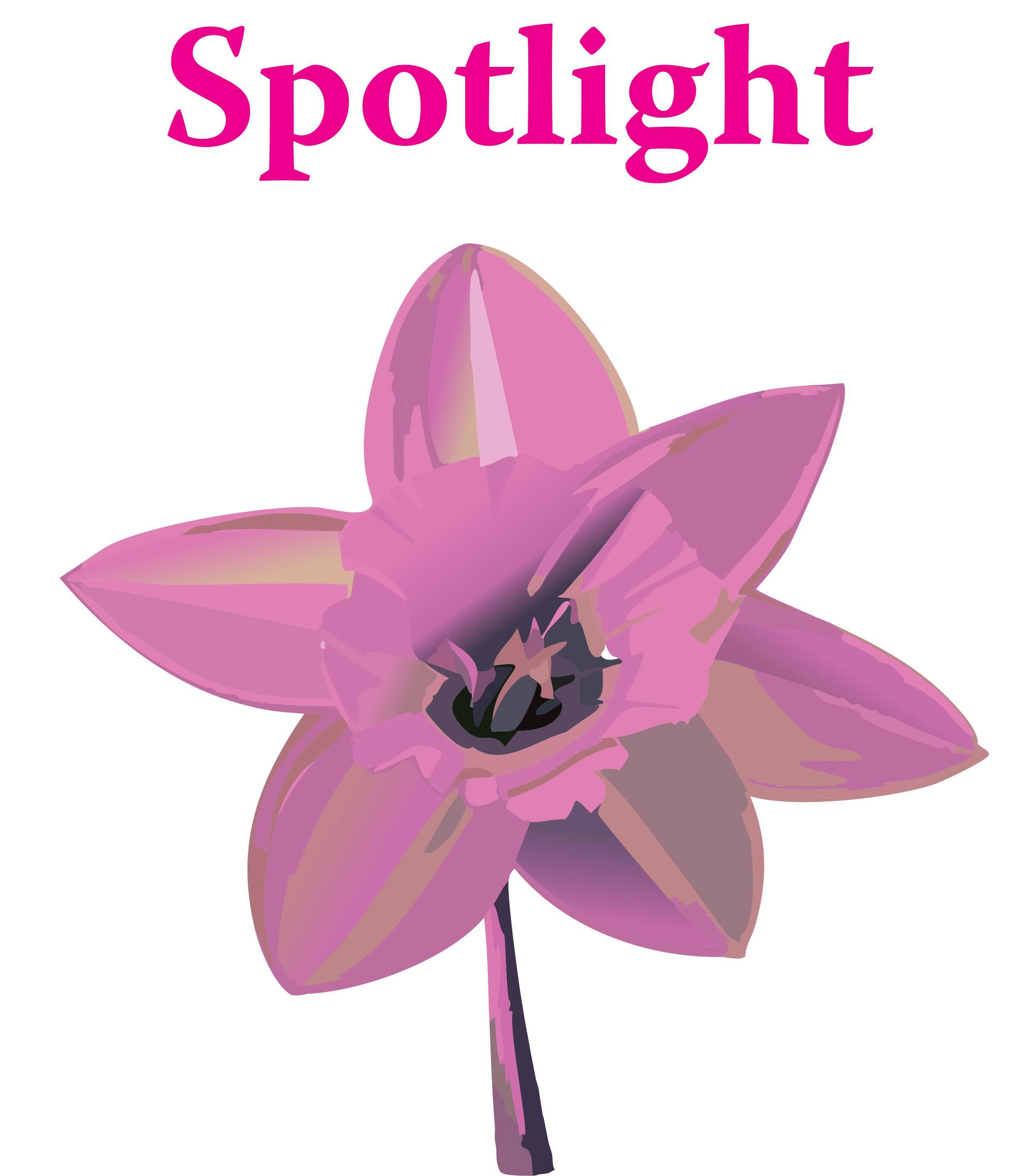
Hidden Gems in Cardiff
Belle Lee – Head of Spotlight
In a world where popular attractions often get spotlighted, it is easy to forget that Cardiff is home to a host of smaller and independent places that are worthy of attention. While it seems almost paradoxical to be highlighting the intentionally hidden, I feel as though I have to spotlight my favourite hidden gems within the city for you all.
Corp Market – Canton
While a little walk away from the city centre to Canton, this place is bursting with charm. Home to a non- proft bookshop, a bar and a plant shop, there is truly something for everyone to enjoy while here. e atmosphere and decorations lend themselves to nature with a roof covered in vines and doors covered in sunfowers, meaning that even during the cold months, it always feels like summer. Once the sun goes down, the market transforms into a live music venue for local and independent bands to showcase their talents. eir identity is all about supporting local traders and talent, so it is a unique experience and a great way to support locally and listen to some live music.
e Dead Canary – City Centre
Putting the ‘hidden’ in ‘hidden gem’, e Dead Canary is Cardiff ’s best-kept secret. With only a birdcage above the entrance, many people would walk straight past. But not you! You now know where to look! With a range of impressive and traditional cocktails and mocktails , each drink tells a unique story with its favour profle. If you fancy being transported back in time to a 1920s speakeasy, then e Dead Canary is a must- try for an evening of fun, drinking and maybe even dancing when live music is also on the menu.
e Secret Garden Café – Bute Park
As the name suggests, this café prefers to remain hidden. Located within Bute Park behind rustic brick walls, a kitchen will be found with some of the friendly staff and some of the best food in Cardiff. From a selection of traditional hot drinks to warm your hands while you wander around to a myriad of pastries, there is something for everyone. e outdoor seating truly makes this café unlike any other, making it the perfect place to refuel on a summer’s day however I would avoid going in the rain as there are only umbrellas for cover!
Bone Yard – Canton
If you want to visit one of the more unique and quirky spots in the city, Bone Yard is the place to check out. e Bone Yard is an old scaffolders’ yard in Canton which was repurposed as a site for reconditioned shipping containers to house independent businesses, retailers, and producers. Home to a paint-your-own pottery studio, jewellery studios and a myriad of independent street food vendors, the Bone Yard is only a bus ride away from the bustling centre.
The Best Places to Get Your Caffeine Fix in Cardiff
Ella Simons – Contributor
If you're like me and sometimes you wish you were hooked up to some form of ‘coffee IV’, you too will have tried almost every cafe in the City Centre. Now more than ever, cafe popularity is skyrocketing and sometimes it is that aesthetic picture of our coffee and cake to put on our Instagram story is just that added bonus to going out to a cafe. Whether you’re going to act productive on your laptop, maybe for a nice reset with a book, or to meet up with some friends, here are some of Cardiff’s best cafes scattered across the centre:
• Scaredy Cats, Working Street, St David’s
Scaredy Cats is a short walk away from Cardiff Castle and a stone's throw away from St David's. A cosy cafe by day and a cocktail bar by night, perfect for going with friends. With a modern and open atmosphere, Scaredy Cats possesses a welcoming and friendly vibe. The establishment offers a wide array of board and card games for customers to play and enjoy at their tables, giving the place that extra piece of charm. The drinks are reasonably priced, whereas the food is more on the expensive side. However, they have a delicious lunch menu, and the portions are definitely sharable! Scaredy Cats has delicious coffee, but lucky for you non-coffee drinkers they have a wide variety of soft drinks, teas and if you’re feeling up to it even alcoholic beverages. They might even give you that extra kick you need to finish that essay in time!
• Coffee Barker, Castle Quarter Arcades
Coffee Barker is a quaint and secluded cafe hidden in the Castle Arcade just opposite the Castle grounds. Its alluring decor and delightful style hold an embracing feel for customers. Not only does it look like it could be a set in a movie, it also has a delicious menu for everyone, from breakfast to brunch to coffee to cakes, even a bottle of wine, Coffee Barker has it all. With an almost perfect rating online, Coffee Barker truly is a city favourite with their Instagram followers constantly sharing mouth-watering pictures of the deliciously great food and drinks. Whilst I must admit it is the priciest on this list, it is a great treat for a revision session on the weekend or for a catch-up with a friend. It is one of those cafes you’d see on a Pinterest board, one that is truly just so aesthetic you are scared you will mess it up.
• Uncommon Ground, Royal Arcade, Morgan Quarter
Uncommon Ground is a low-key cafe located in the Royal Arcade. A perfect coffee spot close to the JOMEC building, perfect for a quick stop or a study break. The coffee is well-priced, and they have some lovely cakes and lunch foods! Uncommon Ground has an awesome architectural design and beautifully decorated interior with loads of unique pieces from the LED lights and the teapots hanging from the ceiling. It has perfect spots to work on your essays and readings whilst enjoying the wonderful coffee they have on offer. Uncommon
Ground is a great spot for students with its cosy and casual setting which allows for a chilled atmosphere to help you focus and take breaks to get the most out of the cafe experience.
Wherever you choose to go for your coffee breaks whether it be for a quick takeout whilst you’re running to a lecture or a relaxed afternoon of catching up with friends or studying, be sure to support an independent, local cafe. Cardiff’s cafes are part of the city's charm and culture and there are some wonderful spots for you coffee lovers (whether you have your favourite spot or take my advice) to enjoy the pleasures of a peaceful coffee break in some of the best places the city has to offer.
Source: Vivian Evans (Via Flickr)

Q took over the Student Union and is Here to Stay
Eve Yates – Contributor
e majority of the time when I go for a night out in Cardiff, I often feel uncomfortable, unsafe, and stressed. So, when Q was advertised to me through the Feminist Society as an inclusive, safe, and fun night, I thought I would tag along. It did not disappoint, and I don’t think I’ve ever felt so relaxed at a clubbing event.
e atmosphere when we arrived at Q was relatively quiet, but it soon picked up. Once more people had arrived, everyone was shouting the lyrics to some classic club tunes and like me, everyone was just there to have a good time. e Lodge was a perfect location for the event, with it being just the right size and a safe space. With lots of sitting areas, it was inclusive to everyone if you needed a break. e Student Union is a familiar place to a lot of people, so it was easy to navigate the space, and as always, the drinks are cheap, making it an affordable night out.
e same goes for the tickets, with early bird tickets only being £1; entry on the door was also available. is is one of the few venues in Cardiff for students that is cheap and still an enjoyable night out. e music was a highlight for me, with it being diverse and there was something for everyone, no matter what your music taste. From Taylor Swift to Katy Perry to Pitbull, these are just some of the artists that were played. e DJs were incredible and very open to requests (in fact they were encouraged); a request from myself for Murder on the Dancefoor was played pretty quickly and was well-received by the rest of the club. at was defnitely a highlight for me.
is event was promoted and attended by multiple different societies, including CU Pride and Feminist Society, meaning a diverse and inclusive group of people. It also allowed me to meet new people who under normal circumstances I wouldn’t have. is event had almost everything I am looking for in a clubbing night; I was able to dance with my friends, enjoy some good music and have a great time without feeling uncomfortable. If you prefer an event that is more intense and livelier, this may not be the event for you, but if you are simply looking to have a good time with some great people, then come along to the next Q night on the 2nd of March.
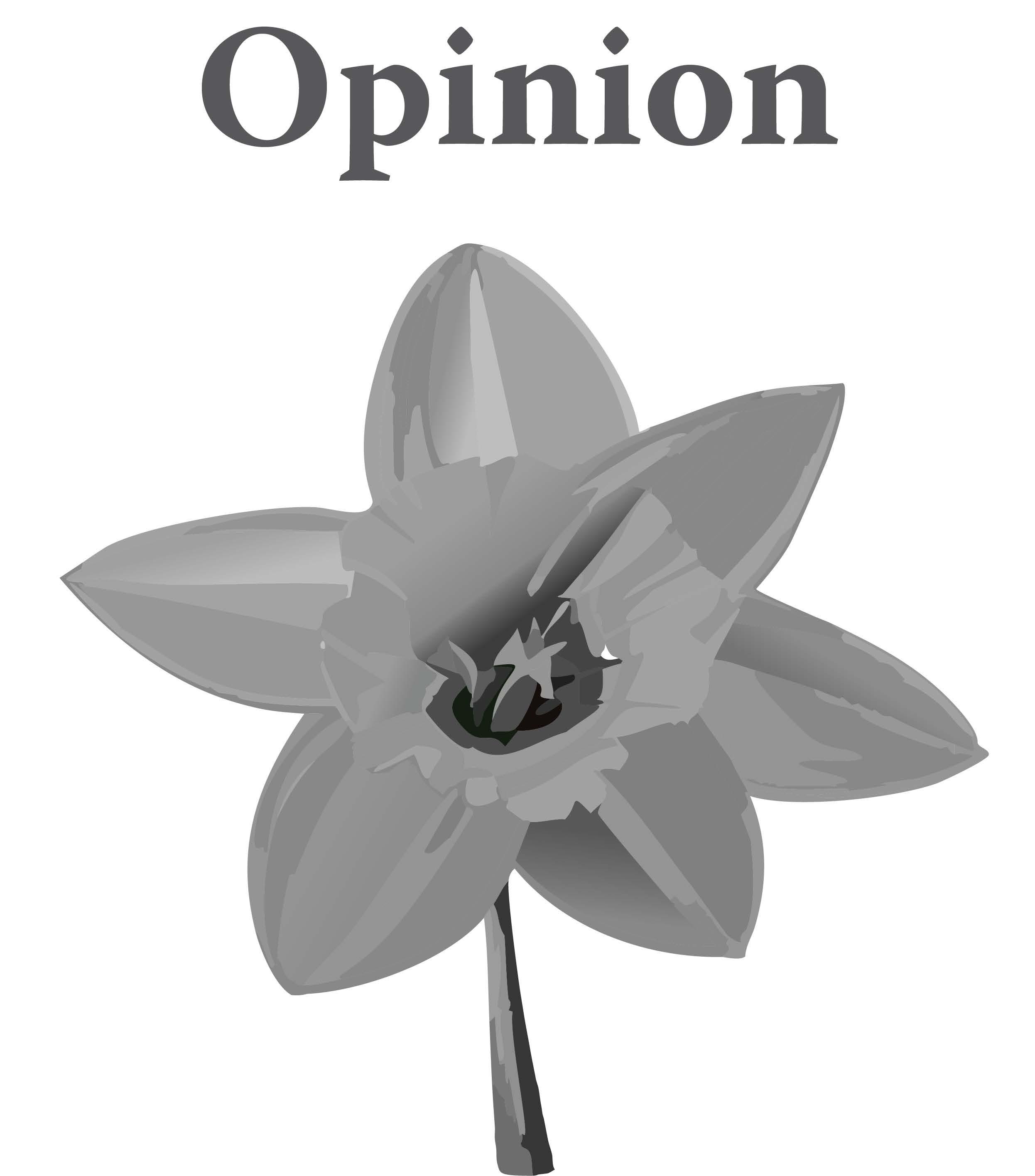
Permanent Statements: Decoding the Reasons Behind the Growing Popularity of Tattoos in Youth Culture
Ella Lane - Opinion Editor
In recent years, tattoos have become increasingly popular among today's teenagers and young adults, transcending their traditional association with rebellion to become a mainstream form of self-expression. But why do young people today not fear regretting their permanent decisions, or judgment from older generations? Let's explore some of the reasons behind this phenomenon.
When asked why they are obsessed with getting tattooed, students interviewed gave similar responses relating to curbing their boredom, the happy feeling it gives them, and making them feel more confident and comfortable with parts of their bodies they used to hide. Many also said that growing up and seeing people with tattoos inspired their desire to have them. Another student pointed to the fact that their tattoos affirm their gender allowing them to take control of parts of their body which are typically ‘feminine’. In essence, the popularity of tattoos in youth culture reflects a broader desire for self-expression, empowerment, and authenticity. Tattoos serve as enduring symbols of individuality.
But are these tattooed people scared they will regret their decisions? Some already do and others are worried they may grow to dislike their tattoos, but overwhelmingly, responses I received pointed to tattoos marking a period of their lives. Even if they grow to dislike them, it represents a past version of themselves and will serve as a reminder of their experiences.
But what do older generations think of this? Well, when interviewed, a member of Generation X believes that “Everyone with tattoos will regret it in later life. Trust me!” Within older age groups, tattoos are seen as irresponsible and even unprofessional, but I believe this perception is changing. One student who doesn't have tattoos said that "It's none of my business, despite my personal opinion, other people having tattoos doesn't affect how I view them.” This reflects changing mindsets amongst young people, even those who plan to never get tattooed.
The surge in popularity of tattoos among today's youth shows a clear shift in societal attitudes towards self-expression. While some may fear the possibility of regretting permanent decisions, the majority of those I interviewed view tattoos as markers of experience, embracing them as integral parts of their identity journeys. Although older generations may still harbor reservations about tattoos, there are signs of shifting perceptions, with younger individuals showing acceptance and understanding despite not wanting to be tattooed themselves. Ultimately, the increasing amount of young people getting tattoos reflects a broader cultural shift towards embracing diversity and individuality.
Source: Ivonne Zanzucchi (Via Flickr)
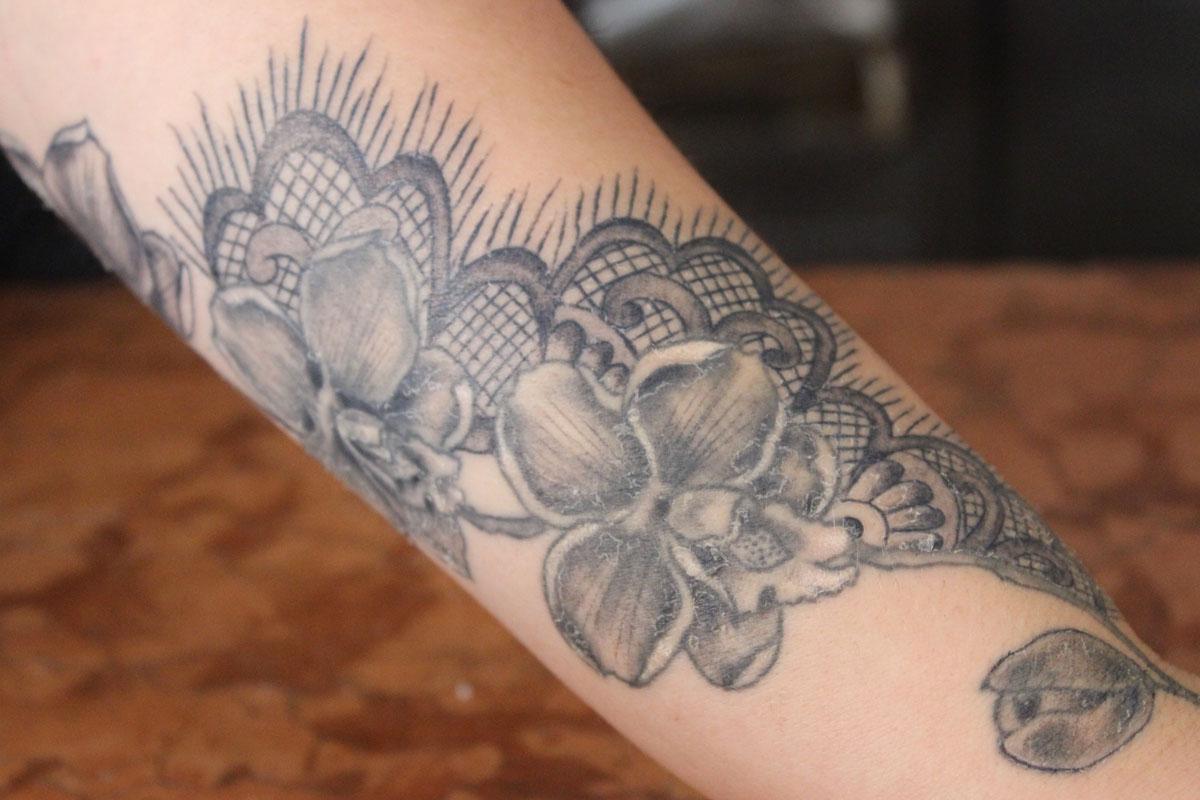
Is BBC history, history?
James Roberts – Contributor
Perhaps it was a little odd, but growing up I was always watching BBC history documentaries. I was captivated by the presentation of the past by confident and capable presenters like, Simon Scharma, Simon Sebag-Montefiore, Janina Ramerez and Lucy Worsley. They seemed to bring their subject matter to life without a need for flashy editing or sensationalism but instead through their passion for the past. In fact, I would go as far to say that were it not for the well-produced history documentaries that used to inhabit the BBC, I would probably not be studying history as one half of my degree. Unfortunately, on a recent trip home (I don’t pay the license fee in Cardiff) I went to the history section of the iPlayer and found very little of interest. Whereas before there was a mixture of good quality programs on a range of historical subjects, I instead found a strange mixture of, Nazi documentaries acted out with an anonymous voiceover, sycophantic programs about the royal family and even a documentary about Andrew Tate. Not exactly the sort of history I grew up watching. I ended up watching some of a new series called Shakespeare rise of a genius which seemed to have all the flaws of the current history offering from the BBC. It used an unseen narrator combined with over generalized commentary formed by random selection of commentators in a poor contrast to earlier takes on Shakespeare’s early life such as by Micheal Wood a few years ago. The general lack of substance combined with overly dramatic acted scenes led me to question if I was even watching a documentary at all. This is not an experience limited to just this series, increasingly the BBC seems to be neglecting its former commitment to informative programming, replacing it with easier to digest but ultimately worse content more in line with what gets pumped out of Netflix or its other competitors. Of course, there is still a trickle of new programs presented by Lucy Worsley comparable to what the BBC used to make but I would argue that this is the exception that proves the rule. Increasingly she appears like the last of a dying breed of tv historians, with her peers steadily deserting the BBC for new opportunities. For example, whereas Simon Sebag-Montefiore’s previous books have been accompanied by a documentary, I doubt this will be the case for his latest history of the world. Instead, I will have to watch one of the many programs about the royal family, complete with a typically groveling narration.
The issues I have mentioned are probably not the fault of just the history section of the BBC but the institution more broadly. Firstly, the issue of public history is more contested, I would argue, than ever before and thus decay of BBC history could be symptomatic of an unease with how to address the past. Secondly, and most importantly, the BBC is in the greatest uncertainty about its future than ever before. It cannot rely upon the masses of public money as it did in the past, and so it must strive to make ends meet. That is almost certainly why it
pushes so many crime dramas, which it knows will garner attention and thus revenue, particularly abroad. By contrast the history programming of the past was the opposite of this model. Content was often expensive, shot on locations thousands of miles away and garnered a more limited audience. And yet if the BBC is to continue the license fee model, I would argue that it needs to make high quality documentaries that stand out against the offerings of other providers to justify its position. Programs like Civilizations represented a commitment
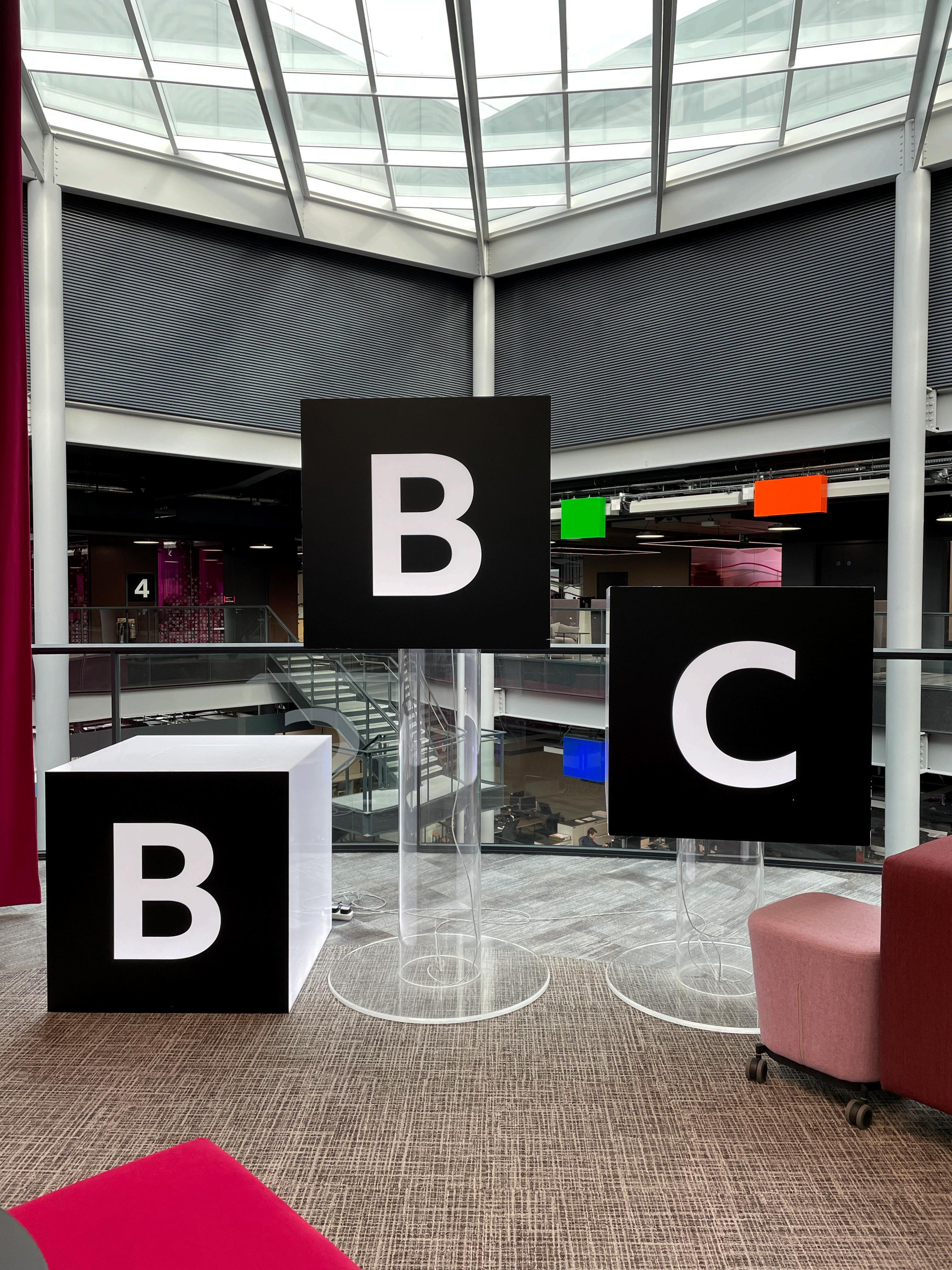
Weaving Diversity: LGBT+ History through intersectionality
Hannah Saavedra Han – Contributor
Initiated in 2005, LGBTQ+ History Month is important not only to raise awareness to current struggles but also to celebrate the achievements of lesbian, gay, bisexual, and transgender people through history. LGBTQ+ history is a colorful tapestry woven with threads of race, gender, sexuality, culture, and other brilliantly diverse identities. However, we cannot look at history without recognizing and embracing the intersectionality of the diverse experiences and struggles of people of the community. An example of intersectionality would be the difference between a black transgender woman’s experience compared t that of a white gay man. The oppression and discrimination that one faces compared to the other does not stop at sexual orientation and/or gender identity, but it would also implicate racism and transphobia.
The experience of everyone in the community is significantly different to each other when we weigh in factors like culture, class, and race. As an Asian Latina lesbian myself, I sometimes find it hard to relate to the stories of other people from the community. I grew up with religion at the core of it all, macho mindset, and homophobic punchlines every Sunday. The Asian side, even if it was more silent, felt as constrictive as the boisterous Latino one. I often try to avoid my coming out story, just because of how messy it was – all those years of internalized homophobia with compulsory heterosexuality sprinkled on top isn’t a funny first date story. LGTBQ+ people of color face higher rates of injustices and mistreatments in legal systems, employment and aspects of their daily personal lives compared to their white counterparts.
Whenever I experience a level of discrimination, I play a Russian roulette guessing game of figuring out if it’s because I’m Asian, homophobia, or my Latino roots. Most times I figure it’s one or two out of three. On lazy days I’ll just assume it’s all three and call it a day. I used to take it so hard and personal in the beginning, but I’ve realized, whatever the root of hatred, it’s more of a reflection of themselves. I won’t sit here and say it’s always fun, hate crimes never are, but it does get easier with time, and you start standing up with more pride. I remember at the beginning of my queer journey, I used to go through what I call ‘my list of minorities I form part of’ as a dark list. Like adding burdens to the already present existence. However, I’ve found, the more I repeated them at some point the narrative changed.
Yes, I have Asian roots.
Yes, I have Latino roots.
Yes, I’m a lesbian.
It’s in acceptance of the diversity that we may find freedom.
The first time I was made blatantly aware of the intersectionality of the LGBTQ community was when news of the murder of O’Shae Sibley broke. He was a Black gay man who was stabbed back in August 2023 while voguing. It really felt like a slap in the face and at the time I didn’t have to words to explain why I felt so scared, shocked, and angry all at the same time. It was like the wind had been knocked out of me. Hate crimes against the community, unfortunately are quite common, like for instance recent death of Nex Benedict just few days ago. But O’Shae’s death felt more personal, somehow. I realize now it was because of the depth of what the stabbing represented: it wasn’t only homophobia, there were also racial undertones. Being gay wasn’t enough of a target. Race was and still is always a factor. It’s what people first see; you cannot shy away from it – there is no closet for it.
“Crystal,darling,you’reshowingyourcolor,”andshesays,“Ihavetherighttoshowmycolor, darling.”
If we look at the statistics, one third (34%) of Black, Asian, and minority ethnic LGBT people have experienced a hate crime in the past twelve months, compared to one in five white LGBT people (20%). What I feel is often forgotten is that hate crimes exist beyond the rainbow. And it can feel like you’re building a multi-layered tier cake of things that make you a target for oppression.
So, I wanted to take this space to shine a light on these. 10% of LGBTQ+ people of color had a doctor refuse to see them because of their sexual orientation, compared to a 4% of white LGBTQ+. When learning about LGBTQ+ history we often forget to mention the LGBTQ people of color trailblazers that have made, and changed, history for us all. LGBTQ people have always existed – in all corners of the world.

All of Us Strangers - A Story of Love, Loss, and Loneliness
Emily Cottle – Review Editor
When first hearing that Andrew Scott and Paul Mescal were starring in a drama together my expectations were high. The two have a history for the dramatic and devastating and their verisimilitude did not disappoint in this gut-wrenching story of love, loss, and loneliness. Andrew Scott plays Adam, a 46-year-old gay man who lives alone in a barren London flat, with few residents apart from one friendly neighbour Harry - Paul Mescal. The two, alone in their building, strike up a tender relationship as Harry learns of Adam's harrowing past. When Adam was just twelve years old both of his parents died in a car crash and almost 30 years later, he is older than his parents came to be. In passing the age of his parents, Adam feels an intense grief and loneliness and, in an attempt, to feel closer to his parents he gets a train to his old family home. Adam stands outside his parents' house then knocks on the door. When he does, he is greeted by his parents as he knew them, alive, smiling and welcoming him home.
The home is a set of nostalgia with its 80’s decor and his parents (played by Claire Foy and Jamie Bell) dressed as he remembered them. This surrealist imagining of his parents continues throughout the film as an ongoing relationship where Adam’s parents learn about his life and his sexuality. Adam gets to tell his parents he is gay, and that the world is ‘better now’. He confronts their dated opinions and manages to tell them how he struggled growing up with their emotionally absent parenting. In his several meetings with them we see Adam regress into his boyish self-needing to change his clothes, hug his father and climb into his parent’s bed when he can’t sleep. In those tender moments this film beautifully expresses how grief never leaves us and in those darkest, loneliest times we crave those we loved and lost.
Alongside Adam’s impossible reunion with his parents, he falls in love with Harry. The pair have an immediate and passionate connection. Harry, though we don’t learn too much about it, is estranged from his parents and alone in London. Through Adam and Harry’s relationship this film explores the insurmountable importance of human connection through mental health and loneliness. Adam, as he falls for Harry, tells his parents about their relationship and they are happy at his genuine connection with him.
The acting performances from all four cast members did not fall short of perfection. The chemistry between Andrew and Paul makes Adam and Harry’s relationship so meaningful and true that you are left devastated by the end. The portrayal from Claire and Jamie as Adam’s parents is so honest and raw and the film does not shy away from complex discussions of a relationship with a gay son in the 80’s. The film, through the conversations
had, not only reflects the mental state of Adam but depicts those moments we wish we could have had with those we’ve lost. The things left unsaid, the apologies, anger and most devastatingly saying goodbye.
This film is a harrowing but beautiful representation of grief, human connection and moving on from those we’ve lost. It is also an imploring tale about opening yourselves up to those that love you. I couldn’t recommend this film more. Please go and see it but don’t forget your tissues.
Source: Antonio Bonanno (Via Flickr)
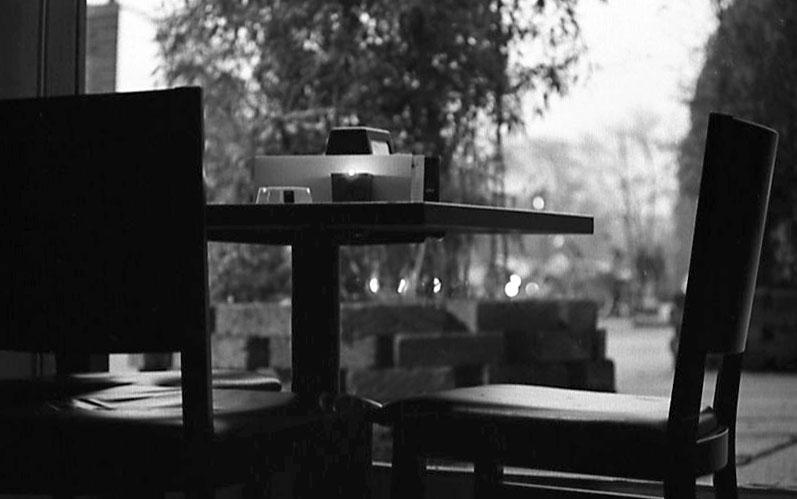
The 1975 – At Their Very Best
Tegan Davies – Contributor
Despite seeing a variation of the same show three times already, nights one and two of their latest shows at the London O2 Arena proved that The 1975 are indeed Still At Their Very Best.
A band I refuse to miss on each tour, regardless of how often they come around, their uncharacteristic avoidance of Wales meant I had to make the trek to the British capital for my music fix. Having done so back in July for their monumental gig at Finsbury Park, another trip with one of my best mates (who is equally as nuts as I am) was an absolute no brainer. And it was another no brainer, when we were sat in Wetherspoons prior to an unrelated show last month, to book more tickets for night 2 when they popped up on resale.
Despite leaving the hotel later than expected, and Uber driver who went the wrong way, got shouted at by the police, and refused to let us out of the vehicle, we arrived at the O2 Arena for the first night with high expectations and hopes. I had never been to the Arena before, with my biggest concert previously being in the Principality in Cardiff, so when I walked into this borderline village that was the O2 I was slightly overwhelmed. Even more so, when we saw the queue for standing, which wrapped right the way around the entire building. After a kerfuffle with O2 Priority, in which we were told conflicting information from email exchanges previously, we joined said general admission queue and suffered the 45-minute wait to get into the actual arena. It was here that I realised just how much the band had grown throughout the period I had been a fan – the days of showing up an hour late to their show at Cardiff International Arena in 2019 and still getting a spot at the barrier were long gone – media reporters and social media were going crazy at the fact that people had camped out for the show an entire four days before the date of the actual gig. However, after what felt like a mile walk, countless zigzags through crowd control barriers and feet already aching, we made it into the actual arena, in which the actual crowd was not so bad!
Having seen them both standing and seated over the two nights, I felt I had the best allround experience when it came to the show. Whilst the seats on the second night took a lot of the stress off of us, it is undeniable that there is no electricity quite like being in the pit. We still loved every second up in the nose bleeds, but the more reserved type surrounded us, and we got weird looks when we sang or stood. Being down on the floor brings new levels of immersion, and we would find ourselves staring at the thousands of heads below us in envy of what we had the night before. The ability to jump around, dance, scream lyrics that mean the world to you is like no other, which is what made the first night better overall. However, both acts were outstanding on both nights, and it was entirely our fault for buying last-minute tickets for night two.
Amber Bain, under her pseudonym TheJapaneseHouse,oozes talent and consistency in every performance she does. I have seen her three times now, first being at Finsbury Park and now twice more, and would recommend her to anybody who loves indie, borderline-
pop ballads and music such as Boygenius, Ethel Cain and Clairo. Her UK tour later this year unfortunately does not come to Wales, but she is worth the effort to travel!
And as for the main event, all I can say is wow. For both nights. The 1975 have never once disappointed me performance wise, even when the basic premise of the show has been so similar for the past five gigs, I’ve seen of theirs. It was bittersweet to hear the opening song The1975off of their latest album BeingFunnyinaForeignLanguage,knowing it could potentially be the last time I hear that song live again. Their self-titled songs at the beginning of each album is a checkpoint for the beginning of the era and that record cycle, and as their hiatus is coming up fast following the EU tour, I am both gutted and excited about the music that is yet to come.
I have never really understood the take that the band’s music always sounds the same, as to me it is anything but. The 1975 have a little bit for everyone at their shows – we have the jazz added through John Waugh’s saxophone solos that exuberates through their latest releases, including bangers such as Happinessand OhCaroline , the country-esque side of their discography from the likes of Roadkill,harder pieces such as the perfect closing song that is People,and their alternative, electric signature sound underneath, in an impressive setlist that has no fault besides not being longer than it already is. I was pleased to hear a range of their songs from all albums – of course, a lot of the latest release, but billings from their four previous records too that united old and new fans. There truly was something for everyone. Even during those shows, I heard songs live that they hadn’t played in my presence before, such as Roadkill,and songs I had heard once and never thought I’d be lucky enough to hear again what with their growing collection (Me,You, Menswear).Unfortunately, the album with the least amount of recognition seemed to be their sophomore release, Ilikeitwhenyousleep,foryouaresobeautifulandyetso unawareofit.This is my favourite album of theirs, and it holds some of their most famous tracks, TheSound,ChangeofHeart,and SomebodyElse,but it would have been nice to hear some deeper cuts, too. No sign of Chocolate,their most celebrated song, however, which was surprisingly refreshing as it made space for more surprises and those idiosyncratic tracks that otherwise wouldn’t have seen the light of day.
During the shows, my feet were barely on the ground, and I walked out of both gigs unable to talk with a throat so sore from screaming along to every word. I laughed, I cried (thanks for that, Me)and I had the absolute time of my life yet again. The 1975, you are never boring. Thank you. Please don’t be away for too long.
Review of ‘Priscilla’ (2023)
Ella Dorman – Contributor
Sofa Coppola’s 2023 flm ‘Priscilla’ movingly depicts the polarity of life alongside a partner all-consumed by the spotlight of fame. Based upon Priscilla Presley’s 1985 memoir ‘Elvis and Me’, Coppola immerses viewers into a world enraptured by rose- tinted young love, ultimately shattered by abuse and isolation. Starring Cailee Spenny as Priscilla and Jacob Elordi as Elvis, the flm follows the couple’s relationship as time passes, despite the disturbing dissonance in their ages.
Opening with intimate shots of the beauty regimes of a normal teenage girl - delicately painted nails, warm- toned lipstick , heavy false eyelashes, and endless dregs of throatclogging hairspray, we are invited to see life with Elvis from Priscilla’s perspective, for the frst time in flm.
e age gap between Priscilla and Elvis is undeniably one of the most signifcant elements of the flm in foregrounding the power imbalance of their relationship, reinforced by the age-appropriate styling of Spenny. Priscilla’s evolution as she moves from girlhood to womanhood is mirrored in her alternating makeup, hair, and style. Her appearance subtly transitions throughout the flm - whilst Elvis’ demeaning infuence turns Priscilla toward jet black hair, dense eye makeup and trendy dresses, by the time she is liberated she has returned to brunette hair, simple makeup, and understated, elegant attire.
e symbolism of the flm is skilful and elusive, underpinning the most poignant events of Priscilla’s life with Elvis . One scene captures her applying makeup just after her waters have broken, signifying the ever-wavering expectance and desire to be Elvis’ ideal woman. Even when Priscilla makes her frst appearance from the hospital, she emerges swathed in a pink dress, her makeup and hair to perfection as she carries her newborn daughter Lisa. Pinpointed by Elvis’ commanding presence and Priscilla’s loss of agency, Coppola paints a scintillating portrait of dysfunction, defned by the comprehensive human need to love, and to be loved, but being with someone who makes that impossible.
While the flm successfully yields Priscilla’s freedom from Elvis’ clutch, it leaves viewers ruminating about the trajectory of her life beyond her relationship and marriage to Elvis. Where the flm triumphs in the portrayal of Priscilla’s newfound autonomy, it is lacking in the illustration of her life as Priscilla, rather than Priscilla Presley.
However, Sofa Coppola must be credited for her interpretation of Priscilla’s memoir. e flm is cleverly crafted to encapsulate the essence of the 60s and 70s through periodaccurate styling and a soundtrack featuring tracks such as ‘You Baby’ by e Ronettes and ‘Forever’ by e Little Dippers , which perfectly encompass the nostalgia the flm offers amid the chaos and discomfort of Priscilla and Elvis’ relationship. ‘Priscilla’ offers an insight into the passage of time in a relationship in the limelight, highlighting the necessity of empowerment and personal fulflment in a world designed around the male gaze.
rough Priscilla’s eyes, audiences are allowed to see the reality of a celebrity who has long been hailed. Viewers come to know Priscilla as a remarkable woman, for the introspection her story proffers, and the strength she had to leave. e fnal track of the flm is particularly striking: ‘I Will Always Love You’ – sung by Dolly Parton. Take that as you will.
Source: Jonas Bengtsson (Via Flickr)

Enchanting Dance by Bollywood Dance Society
Rimsha Ali – Contributor
Prepare to move to the rhythms of Bollywood! Cardiff University Bollywood Society is an engaging dance ensemble that uses vibrant costumes, upbeat dance techniques and thrilling music to transport you to India. And that's not all at all! Cardiff University's renowned Winter Showcase is when the dancers present their rehearsed routines at the end of the Winter semester.
Last semester, 17 talented and energetic students from the society left no stone unturned to perfect their routine for the Just Bollywood competition. An inter-university Bollywood Fusion dance competition. Their hard work and dedication paid off when they secured and won third place nationally out of UK universities!
Their dance performance in the Just Bollywood competition was a visual treat, with the dancers seamlessly blending Bollywood with Shakespeare's Midsummer Night's Dream. From the narrator's introduction to the outburst of energetic dancers in orange lehenga dancing to Dholida, every move and step is crafted to perfection. The use of voiceover adds to the excitement and helps the audience understand the narration of the story, making it an engaging and memorable experience for all.
But that's not all! The use of lighting and stage background display creates an electrifying atmosphere that enhances the plot and makes you feel like you're a part of the story. The group's use of different dance styles, whether it be modern hip-hop or classical, is nothing short of impressive. Each main character's introduction is short and snappy, allowing the audience to engage with the story and feel the emotions of the characters. Previously the society won second place last year in the Just Bollywood Competition for their rendition on Aladdin.
Bollywood Society has collaborated with various societies including CU Pride (LGBT+ Society) where they hosted a dance class for members to participate in and have fun. They even performed for the Tamil Society, crafting an unforgettable routine for the Pongal Ball.
Nevertheless, the society also holds regular socials for members to integrate and get to know each other better. These socials are designed to embrace Indian culture and include exciting themes such as movie nights, Bollywood-themed club nights, karaoke, bowling, and laser tag! With such a diverse range of activities, there's something for everyone, regardless of your background.
This term, Cardiff University Bollywood Society is back with new weekly classes every week on Tuesdays and Thursdays. So, put on your dancing shoes and join this exciting dance group to experience the magic of Bollywood first-hand!
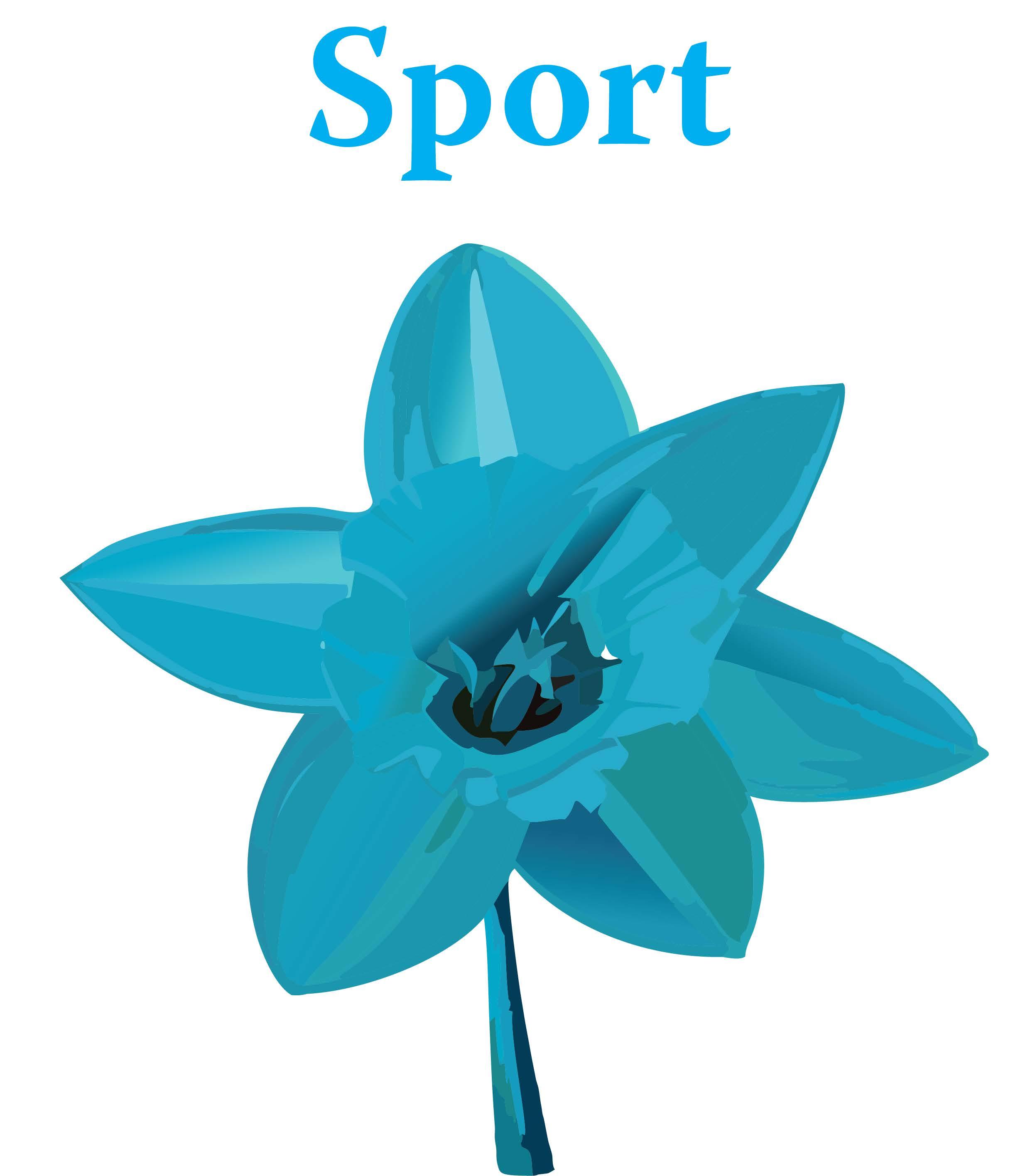
Ex England and Manchester City goalkeeper Joe Hart retiring at the end of the season.
AfteratremendousgoalkeepingcareerJoeHarthasdecidedtohanguphis gloves
Grace D’Souza – Sports Editor
e Shrewsbury born keeper started his goalkeeping career at Shrewsbury Town in 2003 where he had 54 appearances at the club. In 2006 Joe Hart’s career took off when he joined the second biggest club in Manchester. Joe Hart had 226 appearances in goal at Manchester City. He won the Golden Glove for most clean sheets in the 2010/11 Barclays Premier League campaign and went on to win it three years in a row. In terms of silverware Hart lifted the Premier League trophy twice with Manchester City in 2011/12 and 2013/14. Hart was a key player on international duty for England having 75 appearances in his senior career from 2008-2017 where he kept 43 clean sheets and was selected for two of England’s FIFA World Cup squads and two of England’s UEFA European championships. With the arrival of Manchester City’s new and current manager Pep Guardiola the club had a team shake up leading to Joe Hart leaving the club in 2018 and having loans at Tranmere Rovers, Blackpool, Birmingham City, Torino and West Ham United. After leaving Manchester City in 2018 Hart signed for Burnley where he had 19 appearances for the club. When his contract expired, he joined Tottenham and now Hart plays for Scottish Premiership side Celtic where he has had 97 appearances for the club. On the 22nd of February Joe Hart announced he would retire from Football at the end of the season.
England posted on Instagram and congratulated Joe Hart on a fantastic career sharing photographs and videos of the goalkeeper’s best moments playing for England amongst the three lions pride.
SourceLeft:JimmyBaikovicius(viaFlickr)
SourceRight:Corey-AdamCrowley(viaFlickr)























